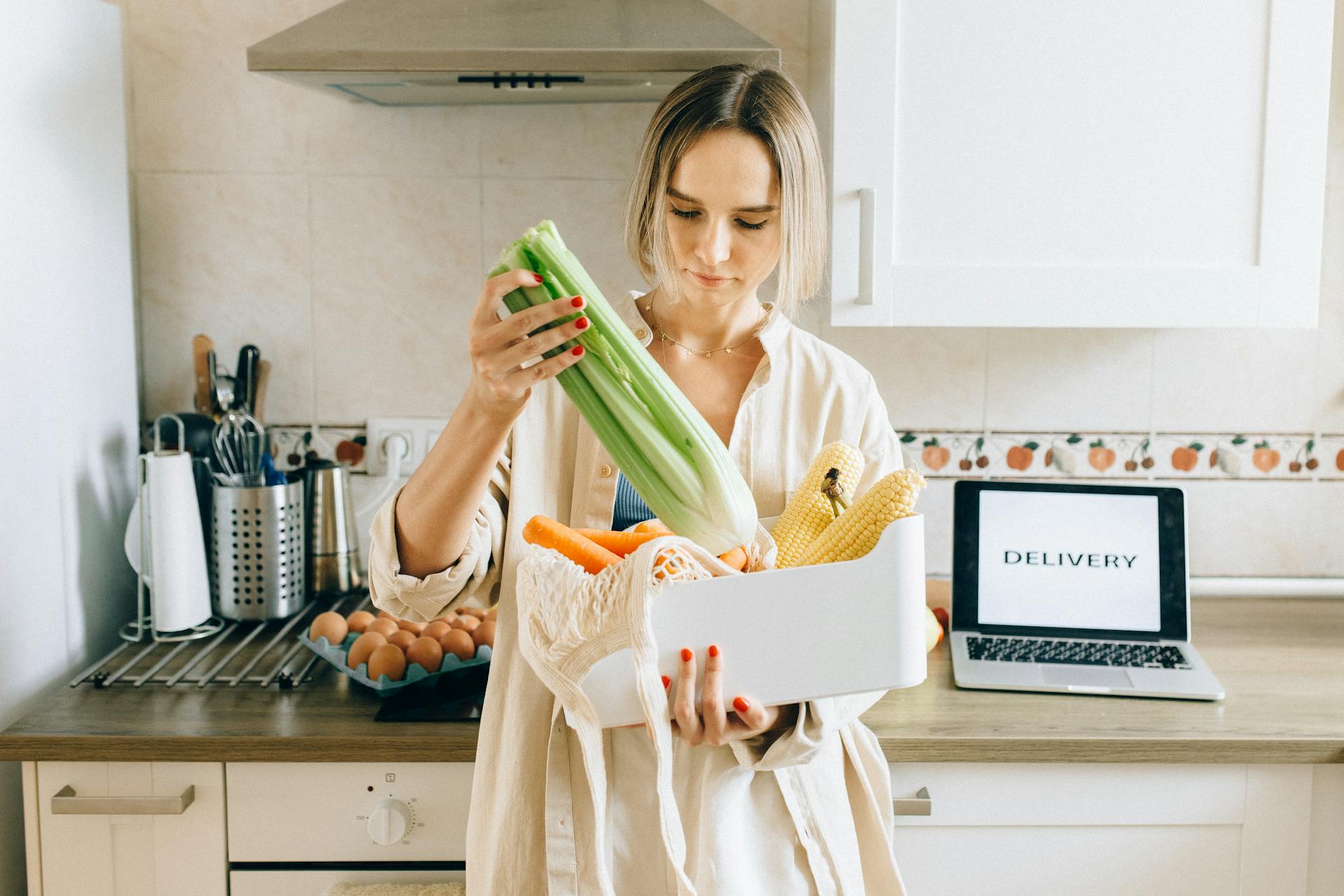
Discover sustainable logistics for healthy food retailers. Learn how eco-friendly transport, packaging, and renewable energy are transforming the industry.
These days, getting fresh and healthy food delivered right to your door is easier than ever before. Whether you regularly order fresh produce or meal kits (like those from Green Chef, for example), the demand for these food deliveries is currently skyrocketing.
With this rise in delivery services, however, comes a new challenge: how can we make sure that the transportation of these goods remains environmentally friendly and sustainable? The food industry is one of the biggest contributors to carbon emissions, largely because of how products are transported.
That said, a lot of retailers and delivery services are starting to adopt more sustainable logistics practices in order to reduce their environmental impact. By using eco-friendly transportation models (like electric vehicles and bicycle or e-bike deliveries), these companies can shrink their carbon footprints.
In this article, we’ll discuss the complex world of sustainable logistics when it comes to healthy food retail and delivery. We’ll specifically focus on how the fresh food and meal kit industries are currently revolutionizing their transportation methods. Let’s get started!
The Importance of Sustainable Logistics
Now, when we talk about logistics in this case, we’re referring to the process of transporting goods from one location to another. In this context of the food industry, this usually means moving produce from farms to warehouses – or delivering meals (or meal kits) straight to your home.
Logistics has more of an environmental impact than you might think. Traditionally, the transportation of goods (produce, meal kits, or otherwise) has relied on airplanes, trucks, and even ships that run on fossil fuels. Unfortunately, these transportation methods contribute heavily to greenhouse gas emissions.
However, the goal of sustainable logistics is to reduce this environmental footprint. It involves finding new ways to move goods more efficiently (using greener forms of energy, of course), and optimizing transportation routes in order to reduce fuel consumption.
Companies that adopt these sustainable practices are not only helping the planet, but they also appeal to eco-conscious customers. These days, more and more consumers are conscious of environmental issues, which is a major reason why sustainable logistics is so important.
Eco-Friendly Transport Models
One of the best ways that food retailers are practicing sustainability is by using eco-friendly transport models. Needless to say, these transport models focus on saving energy, reducing emissions, and lowering the environmental impact of food deliveries. Let’s break it down below:
Electric Vehicles (EVs)
Using electric vehicles for food transportation is one of the best ways that companies can practice sustainability. EVs do not produce any direct emissions, so they’re definitely an ideal choice for companies that want to reduce the environmental impact of their food deliveries.
Hybrid Vehicles
Why fully electric vehicles should be a sustainability goal for companies that rely on transportation, hybrid vehicles could potentially serve as a great transitional solution. Hybrid vehicles use a combination of gas and electricity, which means the carbon footprint that this vehicle uses is greatly reduced.
Bicycle and E-Bike Deliveries
Have you ever had your food delivered to you on a bike or e-bike? Food delivery by bike is the next big thing – and it’s an extremely environmentally friendly transport method, too.
This method not only eliminates emissions entirely, but it also reduces traffic congestion. This means your food will get to you faster, which is always a plus.
Eco-Friendly Packaging and Renewable Energy
When it comes to practicing sustainability, food delivery and meal kit companies often forget about how much of a difference eco-friendly packaging can make. Some companies, however, like Green Chef, focus on healthy gluten-free meal delivery in sustainable packaging.
The distribution centers for Green Chef run entirely on renewable energy, and they take the extra steps to offset all emissions that are created from deliveries. Since partnering with Plastic Bank, Green Chef has helped remove more than 1.7 million kilograms of plastic destined for the ocean from at-risk communities.
Green Chef is actually the first meal kit provider to earn USDA organic certification. It sets itself apart from other companies specifically because it has a strong focus on sustainability. Their ingredients are certified organic and responsibly sourced. They’re also free from pesticides, irradiation, and contaminants like sewage sludge.
They also avoid the use of antibiotics, growth hormones, and steroids. Green Chef is committed to reducing food waste and operates with a carbon footprint that’s 25% lower than that of traditional grocery store products.
The Future of Sustainable Logistics in Food Delivery
Now, more than ever, food delivery and meal kit companies are starting to recognize the importance of environmental sustainability. Clearly, the use of eco-friendly logistics will continue to grow – which is great news for sustainable companies and consumers who support sustainability alike.
As we’ve already seen, choosing to drive electric vehicles (or ride e-bikes) to make food deliveries, and focusing on environmentally friendly packaging and renewable energy are great ways for food delivery companies to practice sustainable logistics.
That said, the real change will ultimately come from consumers. As people become more conscious of the impact that their purchases actually have on the environment, they will be more likely to choose companies that align with their values – even when it comes to small pleasures, like food delivery or meal kits.
Conclusion
Healthy food retailers have a lot to think about when it comes to sustainability practices. Currently, there aren’t many healthy food delivery companies that go the whole nine yards (e.g. their delivery drivers might drive electric vehicles, but at the same time, they use too much plastic in their packaging).
Companies need to focus on eco-friendly transport models along with eco-friendly packaging and renewable energy in order to make a difference in this case. In the future, we can certainly expect to see more healthy food retailers adopting green transportation practices (and other sustainability practices as well).
After all, it’s become all too clear that sustainable logistics isn’t just a trend – it’s a necessity when it comes to food delivery.
Was this news helpful?







 Yes, great stuff!
Yes, great stuff! I’m not sure
I’m not sure No, doesn’t relate
No, doesn’t relate



